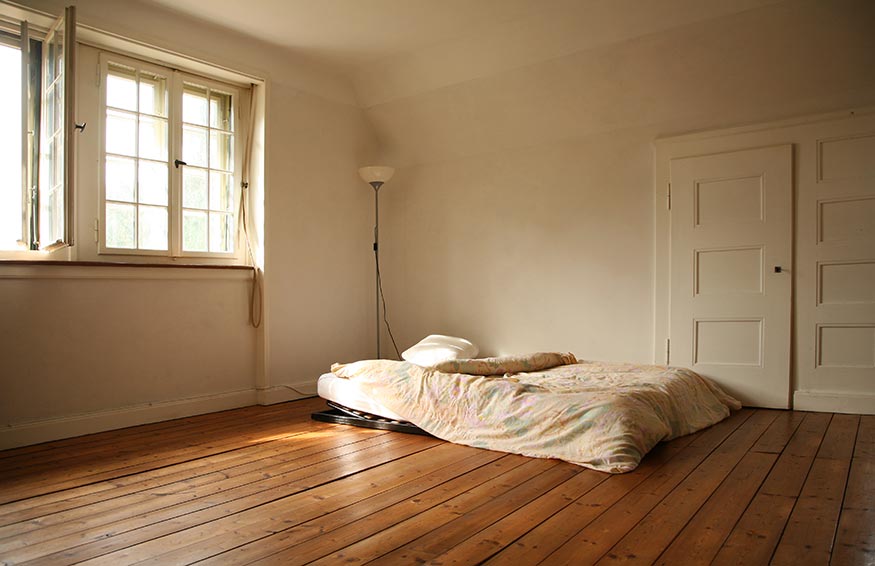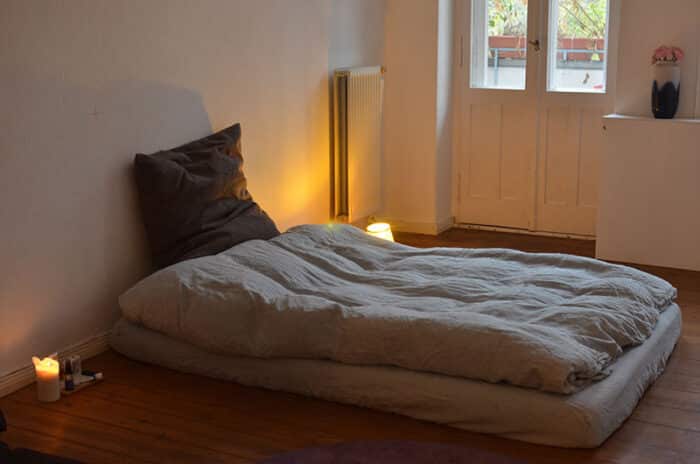Health and Comfort Implications

Sleeping on the floor, especially without a proper mattress, can pose certain health risks and affect your comfort. While some people may find it beneficial, it’s crucial to consider the potential downsides.
Potential Health Risks
Sleeping on the floor can lead to various health problems, particularly if you’re not used to it. Here are some potential risks:
- Back Pain: Sleeping on a hard surface can strain your back muscles and cause pain, especially if you have pre-existing back conditions. The lack of support and cushioning can lead to misalignment and discomfort.
- Neck Pain: Similar to back pain, sleeping on the floor without proper support can put stress on your neck muscles. If your pillow isn’t firm enough or doesn’t provide the right level of support, you could experience neck pain or stiffness.
- Allergies: Dust mites, mold, and other allergens can accumulate on the floor, making it a breeding ground for allergy triggers. If you’re sensitive to these allergens, sleeping on the floor could worsen your symptoms.
Comfort Comparison
The comfort of sleeping on a mattress on the floor versus a bed frame is subjective and depends on individual preferences.
- Mattress on the Floor: Some people find sleeping on the floor more comfortable because it feels more grounded and stable. The lack of movement can be calming and promote better sleep. However, the firmness of the floor can be too much for some people, leading to discomfort and pain.
- Bed Frame: A bed frame with a mattress provides more cushioning and support, which can be beneficial for people with back or neck problems. The height of the bed frame also makes it easier to get in and out of bed, especially for older adults or people with mobility issues.
Firmness and Sleep Quality, Mattress on floor in bedroom
The firmness of the floor can significantly impact your sleep quality.
- Too Firm: Sleeping on a very firm surface can put pressure on your joints and muscles, leading to discomfort and pain. This can make it difficult to fall asleep and stay asleep throughout the night.
- Too Soft: While sleeping on a very soft surface may feel comfortable at first, it can actually be bad for your spine. The lack of support can lead to misalignment and pain, especially if you sleep on your side or stomach.
- Finding the Right Firmness: The ideal firmness for sleeping on the floor is a matter of personal preference. Some people prefer a firmer surface, while others prefer a softer one. Experiment with different types of mattresses and pillows to find what works best for you.
Aesthetic and Design Considerations: Mattress On Floor In Bedroom

A mattress on the floor can be a stylish and functional design choice, especially if you embrace a minimalist, bohemian, or Japanese aesthetic. It can create a clean, uncluttered look, and it can be a great way to add a touch of personality to your bedroom.
Incorporating a Mattress on the Floor into Different Styles
A mattress on the floor can seamlessly blend into various bedroom styles, adding a unique touch to each.
- Minimalist: A mattress on the floor aligns perfectly with the minimalist aesthetic. Choose a simple, low-profile bed frame or skip it entirely for a clean and uncluttered look. Opt for a neutral-colored mattress and keep bedding simple, with minimal patterns or textures. A few carefully chosen decorative elements, such as a throw blanket or a small plant, can add a touch of personality without overwhelming the space.
- Bohemian: For a bohemian vibe, choose a mattress with a colorful, patterned cover or a tapestry. Layer rugs and throws to create a cozy and eclectic atmosphere. Add some bohemian-inspired décor, such as macramé wall hangings, dreamcatchers, or vintage furniture. The use of natural materials like wood, rattan, and cotton adds to the bohemian feel.
- Japanese: The Japanese aesthetic emphasizes simplicity and functionality. Choose a futon mattress for a traditional Japanese look. Keep the bedding minimal and choose natural materials like cotton or linen. Use tatami mats for flooring, which are traditional Japanese straw mats. Add some Japanese-inspired décor, such as a bonsai tree or a calligraphy scroll.
Practical Considerations and Alternatives

Okay, so you’ve decided to ditch the bed frame and go for the “mattress on the floor” life. It’s a pretty trendy choice, especially if you’re all about minimalism and keeping things simple. But before you go and chuck your bed frame out the window, there are a few things you need to think about.
Storage
Let’s be real, having a bed frame gives you a ton of extra storage space under the bed. You can stash away all your seasonal clothes, extra blankets, or even those old textbooks you’re too sentimental to throw away. With a mattress on the floor, you’re basically losing all that valuable storage space. So, if you’re a hoarder like me, you might want to rethink this whole “mattress on the floor” thing.
Cleaning
Another thing to consider is cleaning. Dust bunnies love to party under the bed, and they’re even more likely to throw a rager if you’ve got a mattress on the floor. It’s much harder to reach under the mattress and give it a good vacuuming. You’ll be spending more time on your hands and knees, which is not exactly the most glamorous way to spend your time.
Accessibility
Accessibility is also something to think about. Getting in and out of bed can be a bit of a challenge, especially if you’re not the most agile person. It’s also harder to make the bed, and you’ll be constantly bumping your knees on the floor. If you have any mobility issues, a mattress on the floor might not be the best option for you.
Types of Bed Frames
Okay, so maybe you’ve realized that a mattress on the floor isn’t the best idea. Don’t worry, there are plenty of other options out there. Let’s take a look at some of the most popular bed frames:
Platform Beds
Platform beds are super popular because they’re simple, sleek, and often come with built-in storage. They’re also pretty affordable, so they’re a good option if you’re on a budget. The downside is that they can be a bit bulky, so they might not be the best choice for small bedrooms.
Futons
Futons are super versatile because they can be used as both a bed and a sofa. They’re also pretty compact, so they’re a good choice for small spaces. The downside is that they can be a bit uncomfortable to sleep on, and they’re not as durable as other types of bed frames.
Adjustable Beds
Adjustable beds are the ultimate luxury. They allow you to raise and lower the head and foot of the bed, which can be really helpful if you have back pain or other health conditions. They’re also great for reading in bed or watching TV. The downside is that they’re the most expensive type of bed frame.
Choosing the Right Bed Frame
When choosing the right bed frame, you need to consider your budget, the size of your bedroom, and your personal preferences. If you’re on a tight budget, a platform bed is a good option. If you have a small bedroom, a futon or a smaller platform bed might be the way to go. And if you want the ultimate in comfort and luxury, an adjustable bed is the way to go.
Mattress on floor in bedroom – Sleeping on a mattress on the floor can be pretty minimalist, but sometimes you need a little more organization in your life. If you’re looking for a way to add some extra storage space without taking up too much room, a small storage cabinet for bedroom is a great option.
You can keep all your clothes, books, and other essentials organized and tucked away, leaving your bedroom feeling spacious and relaxing, even with your mattress on the floor.
Sleeping on a mattress on the floor can be a pretty chill vibe, especially if you’re going for a minimalist look. If you’re looking for some inspiration for your bedroom decor, check out this awesome article on blue and burgundy bedrooms , they’re super cozy and sophisticated.
I think a blue and burgundy color scheme would actually look pretty dope with a mattress on the floor, maybe with some cool throw pillows and a plush rug.
